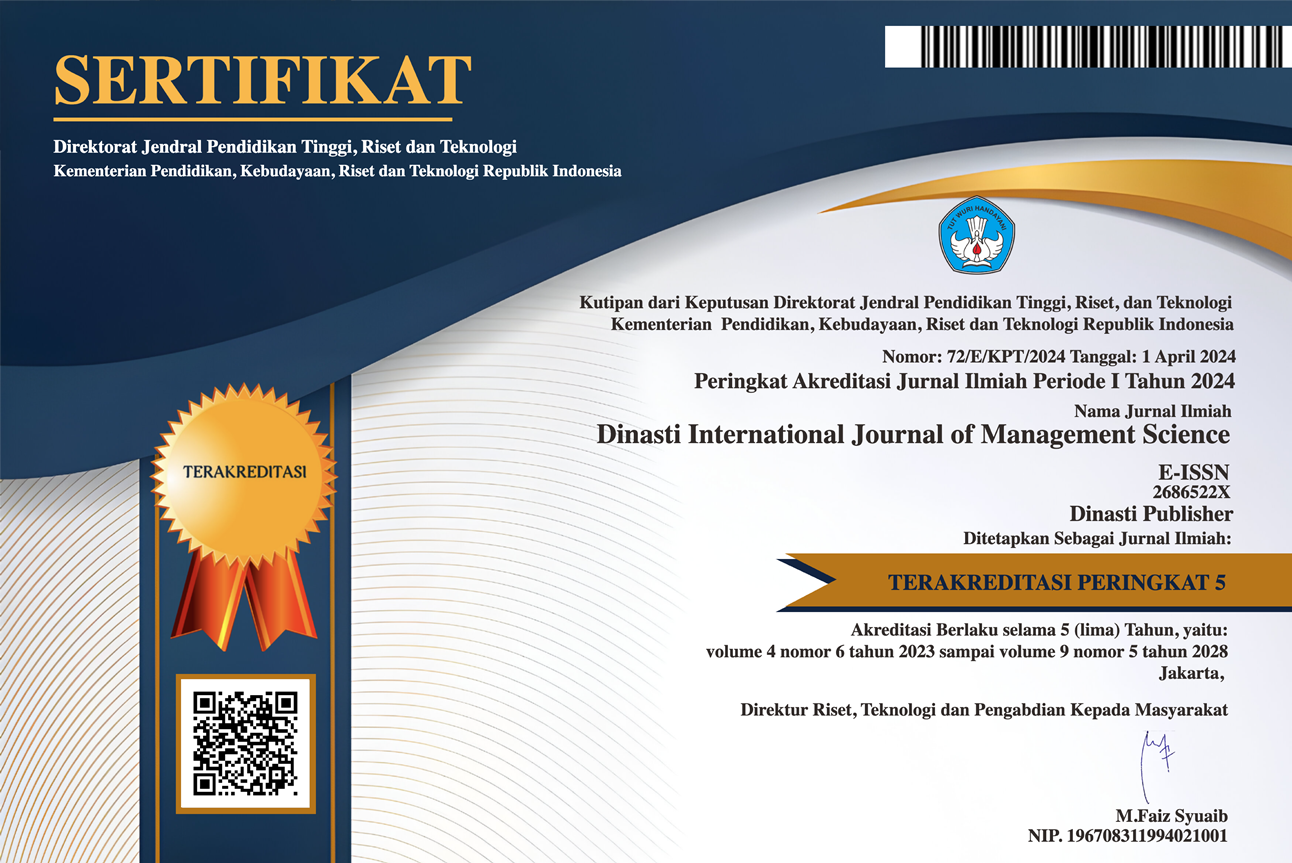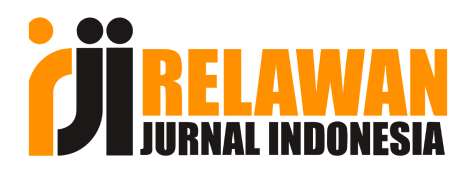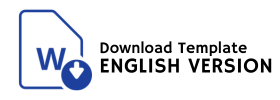Analysis Driving Factor Implementation 5S in Manufacture (Case in PT. XYZ)
DOI:
https://doi.org/10.38035/dijms.v6i4.4221Keywords:
5S, Manufacturing Industry, Efficiency, ProductivityAbstract
This research aims to analyze the driving factors of implementation with 5S (Seiri, Seiton, Seiso, Seiketsu, Shitsuke) in the Manufacturing industry. The method used in this research is a literature study from various sources of journals, books, and related publications. The results of the analysis can be identified five main factors that encourage the application of the 5S concept in the manufacturing industry are the first increase in production process efficiency. Second, there is an increase in employee discipline and work culture. Third, creating a safe and comfortable work environment. Fourth, increased productivity and competitiveness of the company due to efficiency and good work reputation. Fifth, there is a management commitment to continuous improvement with the support of resources and consistent evaluation. Effective implementation of the 5S concept is proven to benefit companies, especially manufacturers, by increasing efficiency, productivity, and a good work culture. These can be key factors that encourage the adoption of 5S in the manufacturing industry.
References
Alim, A. N., & others. (2022). Analisis 5S Dalam Proses Produksi Di Pt. Xyz. Journal of Engineering Research and Aplication_JERA, 1(1), 21–25.
Anggarini, D. T. (2020). 5S Implementation for Improving the Efficiency of Manufacturing Service Division in Tangerang. Business Innovation and Entrepreneurship Journal, 2(2), 91–100. https://doi.org/10.35899/biej.v2i2.87
Chee Houa, S., Haslinda, M., Muliati, S., Mariam Miri, A., & Rahim, A. F. (2018). Implementation of 5S in Manufacturing Industry: A Case of Foreign Workers in Melaka. MATEC Web of Conferences, 150, 1–5. https://doi.org/10.1051/matecconf/201815005034
Dian Palupi Restuputri, & Dika Wahyudin. (2019). Penerapan 5S (Seiri, Seiton, Seiso, Seiketsu, Shitsuke) Sebagai Upaya Pengurangan Waste Pada Pt X. Jurnal Sistem Teknik Industri, 21(1). https://doi.org/10.32734/jsti.v21i1.903
Febriyanto, F. C., Kusumaningsih, A., Sahara, L. I., & Saga, B. (2020). Pengenalan Metode Kaizen dalam Meningkatkan Efisiensi dan Produktivitas di PKBM/Pusat Kegiatan Belajar Masyarakat Kak Seto. Jurnal Abdidas, 1(2), 48–56. https://doi.org/10.31004/abdidas.v1i2.19
Gupta, K. (2022). A review on implementation of 5S for workplace management. Journal of Applied Research on Industrial Engineering, 9(3), 323–330.
Latifah Ahmad, T., & Nita Kusumawati, A. (2020). Systematic Literature Review: Implementasi Metode 5S Pada Perusahaan Manufaktur. Jurnal Teknologi Dan Manajemen Industri, 1, 31.
Made Iska Aprilia Wardhani, & Tasnim Nikmatullah Realita. (2022). 5S As a Form of Lean Manufacturing Implementation in the Perspective of Human Resources: A Case Study in Food SMEs. SOSMANIORA: Jurnal Ilmu Sosial Dan Humaniora, 1(4), 599–605. https://doi.org/10.55123/sosmaniora.v1i4.1275
Of, Q., Production, F., Meubel, I. N., Agung, K., & Ponorogo, O. F. (n.d.). A l a p a. 10, 45–60.
Penerapan Seiri, Seiton, Seiso, Seiketsu, Dan Shitsuke (5s) Pada Departemen Transportasi PT. Prasadha Pamunah Limbah Indrustri Bogor. Jurnal Keselamatan Transportasi Jalan (Indonesian Journal of Road Safety), 6(2), 88–109. https://doi.org/10.46447/ktj.v6i2.34
Sugiharto, S., Tea, R., & Jamhari, S. (2019). Evaluasi
Shahriar, M. M., Parvez, M. S., Islam, M. A., & Talapatra, S. (2022). Implementation of 5S in a plastic bag manufacturing industry: A case study. Cleaner Engineering and Technology, 8(September 2021), 100488. https://doi.org/10.1016/j.clet.2022.100488
Yulianty, E., & Suseno, A. (2022). Evaluasi Departement Werehouse Sub Raw Material PT. XYZ dengan Metode 5S + safety. Jurnal Pendidikan Tambusai, 6(1), 1381–1390.
Downloads
Published
How to Cite
Issue
Section
License
Copyright (c) 2025 Adelia Dwi Valentin, Rahman Soesilo

This work is licensed under a Creative Commons Attribution 4.0 International License.
Authors who publish their manuscripts in this journal agree to the following conditions:
- The copyright on each article belongs to the author(s).
- The author acknowledges that the Dinasti International Journal of Management Science (DIJMS) has the right to be the first to publish with a Creative Commons Attribution 4.0 International license (Attribution 4.0 International (CC BY 4.0).
- Authors can submit articles separately, arrange for the non-exclusive distribution of manuscripts that have been published in this journal into other versions (e.g., sent to the author's institutional repository, publication into books, etc.), by acknowledging that the manuscript has been published for the first time in the Dinasti International Journal of Management Science (DIJMS).
















































